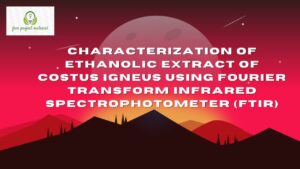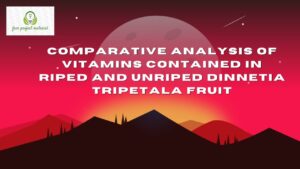ABSTRACT
The phytochemical screening of Heinsia crinita was carried out using the standard procedure. The result reveals that saponins and cardiac glycosides were abundantly present, alkaloids and tannins were moderately present while flavoniods was present in trace quantity. This may be the reason of using the plant in traditional treatment of diseases.
TABLE OF CONTENT
Title page
Certification
Dedication
Acknowledgement
Abstract
Table of contents
CHAPTER ONE
1.0 Introduction
1.1 Background of the study
1.2 Aim and objectives
1.3 Scope and limitations
1.4 Definition of terms
CHAPTER TWO
2.0 Literature Review
2.1 Origin of Plant
2.2 Description of Heinsia crinita
2.3 Species of the plant
2.4 Phytochemicals
2.5 Alkaloid
2.6 Flavonoid
2.7 Saponin
2.8 Tanin
CHAPTER THREE
3.0 Material and Method
3.1 Collection of sample for analysis
3.3 Preparation of the Extract
3.4 Phytochemical Screening
3.5 Test for Saponins (Frothing Test)
3.6 Test for Tannins (Ferric Chloride Test)
3.7 Test for Flavonoids (Shinoda Test)
3.8 Test for Alkaloid (Dragendorff’s Test)
3.9 Test Cardiac Glycoside
CHAPTER FOUR
4.0 Result and Discussion
4.1 Result
4.2 Discussion
CHAPTER FIVE
5.0 Conclusion, Recommendation
5.1 Conclusion
5.2 Recommendation
References
CHAPTER ONE
1.0 INTRODUCTION
1.1 Background of the Study
Green leafy vegetable are an important part of human and animal diet, as they are vital source of mineral nutrients needed for proper metabolic functions of the body. Many plant –derived substances, collectively termed “phytonutrients” or “phytochemicals” are becoming increasingly known for their antioxidant activity.
The plant, Heinsia crinita belongs to the family Rubiaceae. It is locally called Atama (Okokun,2009). It is a shrub with a woody stem and branches and is indigenous to West Africa, especially the southern part of Nigeria (Akwa Ibom and Calabar),topical regions of Africa, from Guinea to Western Cameroon and Equatorial Guinea and across the Congo basin to East and South Central Africa (Charles et al.,2014). Almost all parts of the plant can be utilized as food or for medicinal purpose.
Studies have shown that Heinsia crinita has antidiabetic and antiplasmodia properties (Okokun, 2009), and antioxidant properties (Nwanna et. al., 2015). Hence its use in folk medicine.
In recent years, there have been a gradual revival of interest in the use of medicinal plants in developing countries because herbal medicines have been reported safe and without any adverse effect especially when compared with synthetic drugs with better and cheaper substances from plant origin are a natural choice. The medicinal value of this plant lies in some chemical substances that produce a definite physiological action on the human body (Edeoga et al., 2005).
Recently, the medicinal status of Heinsia crinita has been established (Mehesh. et al., 2008). Orthodox medicine has overshadowed African traditional medicines, hence, the over dependence on industrialized nations for the treatment and control of disease in Africa. The increase of antibiotic resistance of microrganism to conventional drugs has necessitated the search for new efficient and cost effective ways for the control of infectious disease.
1.2 Aim and Objective of the Study
The aim and objective is to carryout the phytochemical screening of Heinsia crinita.
1.3 Scope and Limitations
This research focuses on the phytochemical screening of Heinsia crinita
This research is limited by financial and time constraints.
1.4 DEFINITION OF TERMS
PHYTOCHEMICALS: Phytochemical means plant chemical. They are organically active, naturally occurring chemical compounds present in plant, which gives health benefits for humans more than those endorsed to macronutrients and micronutrients.
SCREENING: This is the evaluation of investigation of something as a part of a methodical survey, to access suitability for a particular role or purpose.
Heinsia crinita: This is a shrub with woody stems and branches and given leavy leaves consumed by moistly African countries.
ANTIOXIDANTS: These are substances that can prevent or slow damages to cell caused by free radicals, unstable molecules that the body produces as a reaction to environment and other pressures.



